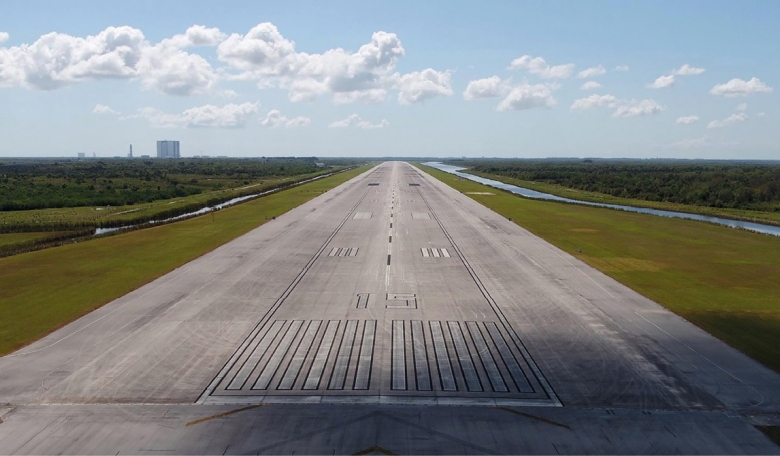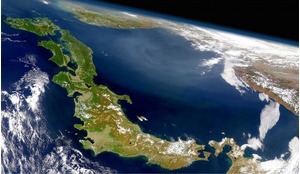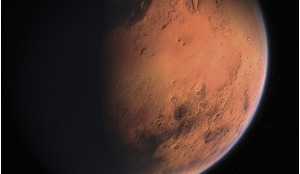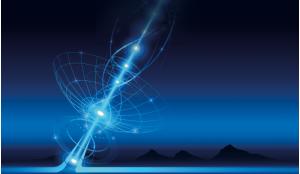Since the beginning of the Space Age in the1950s, the US State of Florida has been a leader in the space industry. The nation originally turned to Florida for its spaceport because of location - proximity to both the ocean and equator. With time, the world watched as the historic missions of Mercury, Gemini, Apollo and Space Shuttle launched from Florida, as well as numerous defence and planetary science missions. Astronauts flew aboard the Space Shuttle to the International Space Station and the Space Coast region rode the economic boom of America’s thriving space programme as the Air Force provided Cape Canaveral facilities, NASA’s John F Kennedy Space Center, and their contractors privided thousands of high-paying jobs.
After playing centre stage for more than five decades, in 2004 an underlying unease descended on the space ecosystem across the State of Florida, and particularly Florida’s Space Coast, after it was announced that the high-profile US Space Shuttle programme was to be terminated.
Space Florida, the state’s aerospace and spaceport development authority was bracing for impact. As America and the world watched a Space Shuttle land for the final time in 2011, the outlook for Florida’s space industry was gloomy. The once-thriving Kennedy Space Center (KSC) saw the loss of more than 9,100 jobs and the wider area began to experience a trickle-down effect as both the housing market and tourism businesses went into decline.
It was at this critical moment that the Space Florida board and its leadership committed to a strategy aimed at forever reviving the state’s aerospace industry and never again seeing Florida damaged by an overdependence on a large federal programme or agency.
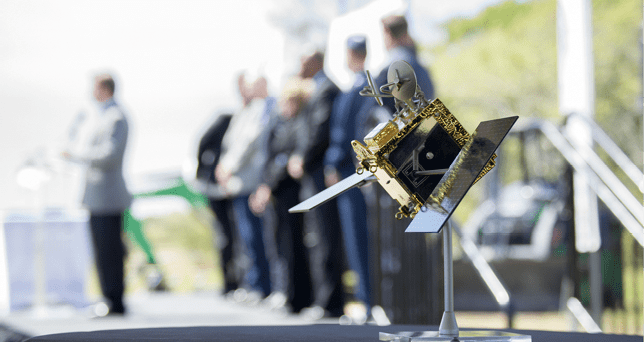 In 2016, OneWeb Satellites, a joint venture between Airbus and OneWeb, announced it would build a high-volume satellite manufacturing facility in Florida. In 2019, OneWeb Satellites’ Florida factory produced the first 34 satellites for its broadband constellation.
In 2016, OneWeb Satellites, a joint venture between Airbus and OneWeb, announced it would build a high-volume satellite manufacturing facility in Florida. In 2019, OneWeb Satellites’ Florida factory produced the first 34 satellites for its broadband constellation.
We watched as the Kennedy Space Center’s contractor workforce all but shut its doors. The cancellation of Shuttle, which came at an already-volatile time during a recession, was devasting for the State of Florida. The impact was far reaching, and state leadership promised to do everything it could to help revive the industry. The starting point was to reduce the dependence on an, at times, unpredictable federal programmes.
As America and the world watched a Space Shuttle land for the final time in 2011, the outlook for Florida’s space industry was gloomy
Space Florida’s solution was a widely-supported strategy to diversify Florida’s aerospace industry and build the depth of its industry supply chain across a broad spectrum of aerospace technology and manufacturing areas.
Space Florida, which is headquartered at the Cape Canaveral Spaceport, was created by Florida’s legislature as a special district of the state, covering the civil, military and commercial sectors of the space industry. One of its key goals was to strengthen the state’s position as the global leader in aerospace research, investment, exploration and commerce.
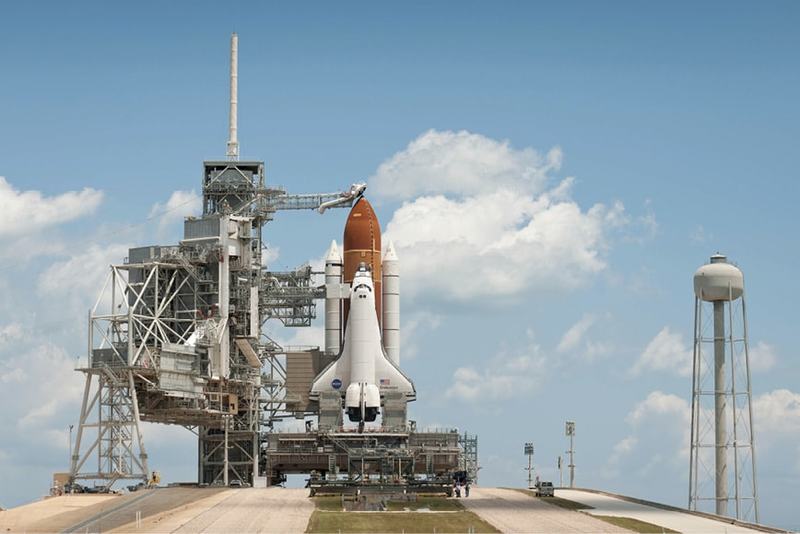 Space Shuttle Endeavour sits on launch pad 39-A in May 2011 before its STS-134 mission, just months before the Shuttle programme ended.
Space Shuttle Endeavour sits on launch pad 39-A in May 2011 before its STS-134 mission, just months before the Shuttle programme ended.
Today, the Cape Canaveral Spaceport, which encompasses Space Florida assets as well as the Kennedy Space Center and the Cape Canaveral Air Force Station, is undergoing a transformation, offering its state-wide industry a new renaissance. Over the next decade, Florida’s Spaceport system will grow into the most diverse and capable space transportation and operations complex in the world. The state is poised to dominate the future of the aerospace industry and has the goal to become an essential interstellar trade port and global leader in enabling space commerce.
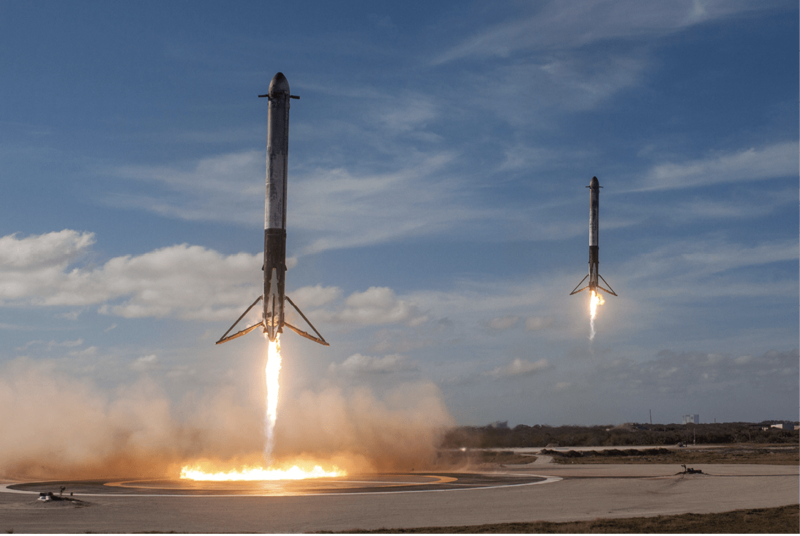 In February 2018, SpaceX landed two of the three first-stage boosters from its Falcon Heavy rocket’s inaugural launch.
In February 2018, SpaceX landed two of the three first-stage boosters from its Falcon Heavy rocket’s inaugural launch.
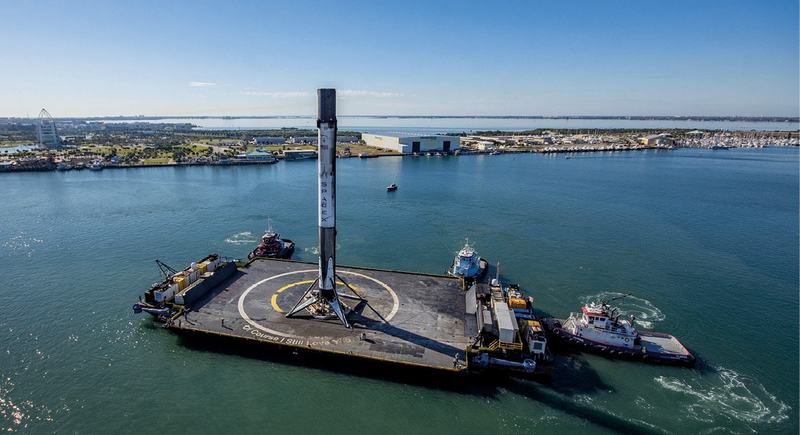 As of February 2020, SpaceX had successfully landed 49 first-stage boosters, including landings on its autonomous droneship ‘Of Course I Still Love You’, pictured here in Port Canaveral.
As of February 2020, SpaceX had successfully landed 49 first-stage boosters, including landings on its autonomous droneship ‘Of Course I Still Love You’, pictured here in Port Canaveral.
Successful transition
Space Florida has made great progress in modernising and re-purposing Air Force and NASA infrastructure, by partnering with those agencies and investing in commercialising aged or under-utilised assets.
Facilities that once launched NASA’s Apollo and Space Shuttle missions are now launching commercial rockets. The state’s spaceport system is a living example of the transformation that we had hoped for in 2011 - transitioning from purely government-led facilities and infrastructure to a flourishing commercial, market-driven enterprise, which also supports government missions.
Three such facilities are the former Orbital Processing Facilities (OPF) of NASA that were used to turnaround and process the Space Shuttle after landing for subsequent re-flight to space.
Space Florida secured a long-term property agreement for the first of these, OPF 1, and invested to modernise and commercialise the aged building. Today it is the site of Boeing’s modern, world class manufacturing facility for its human-rated Starliner spacecraft, which will resume the capability for the US to fly its own astronauts to the International Space Station (ISS) from US soil and on US spacecraft. OPFs 2 and 3 have similarly been re-purposed to enable flight operations of the Air Force X-37 spacecraft.
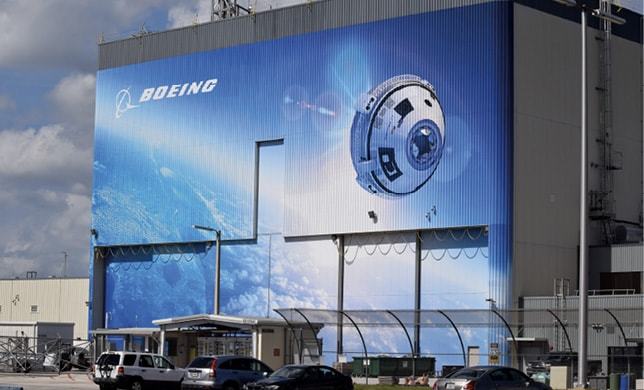 Once a former Shuttle processing facility, Boeing now uses this infrastructure for its CST-100 Starliner.
Once a former Shuttle processing facility, Boeing now uses this infrastructure for its CST-100 Starliner.
In 2015, the State of Florida acquired the former Shuttle Landing Facility - now Launch and Landing Facility (LLF) - from NASA, aiding in the transformation of the spaceport from a strictly government facility to use by both commercial and government aircraft and spacecraft. Breathing new life into this storied runway and building additional common-use infrastructure will pave the way for future commercial use, which will include horizontal launch and landing capabilities.
Space Florida has made great progress in modernising and re-purposing Air Force and NASA infrastructure
In 2016, Amazon’s Jeff Bezos announced that his space company Blue Origin had selected Florida as the site for the launch, manufacturing and support facilities for its Orbital Launch Vehicle programme. Today, construction for its launch complex is also underway at Space Launch Complex (SLC) 36, the former launch site of Surveyor 1 - the first US spacecraft to land on the Moon. The manufacturing campus alone now encompasses more than a million square-feet.
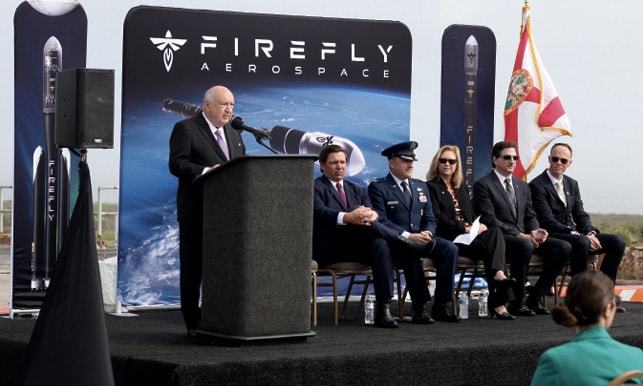 Space Florida announced Firefly Aerospace’s selection of Florida for launch and manufacturing.
Space Florida announced Firefly Aerospace’s selection of Florida for launch and manufacturing.
With help from the State of Florida, SpaceX brought the former Apollo and Shuttle pad Launch Complex 39A back to life, launching Falcon 9 and Falcon Heavy rockets. Less than four years after the end of Shuttle, SpaceX launched its Falcon 9 rocket from the Cape Canaveral Spaceport and then landed the rocket’s first stage booster on land, marking a revolution in launch technology and reusability. As of February 2020, the company had landed 49 of its booster rockets and re-flown some of them, lowering the cost of flight and helping to open up spaceflight opportunities for many new countries and companies around the world by making space more affordable.
The key to the strength of the partnership between Space Florida, its federal partners and the space industry is Space Florida’s ability to access and bring-to-bear ‘private sector capital’ for needed spaceport infrastructure, enabling access to that infrastructure for new commercial operators, and allowing NASA and the Air Force to focus their programme dollars on meeting their mission needs. As the spaceport evolves for the future, it may well affordably and effectively serve all spaceflight operators, both governmental and commercial as ‘space-faring customers’.
Space Florida’s focus for the next decade is to build the capacity and capability of Florida’s Spaceport System with new common-use and special purpose infrastructure that will enable the State of Florida to remain the world’s primary gateway to space, serving space exploration, national security and space commerce needs. In the decade to come, the industry will see increased activity from both heavy and small launch vehicles, as well as a major change in the use of satellites, spacecraft and low Earth Orbit operations.
Satellites, once bulky, exquisite and exclusive to large communications players, today and in the future are becoming much smaller in size increasingly more capable, and certainly more accessible to smaller companies and universities. OneWeb Satellites, with a presence in Exploration Park, Florida (a world-class manufacturing facility enabled by Space Florida), is building small satellites at the rate of up to 15 a week - satellites that will bring broadband connectivity to the world.
Numerous other satellite and spacecraft manufacturers are also establishing operations near the spaceport. Florida is well on its way to creating an environment that fosters supply chain, manufacturing and research and development endeavours alongside its vigorous launch schedule. The state is well on its way to supporting launch on demand and satellite on demand capability.
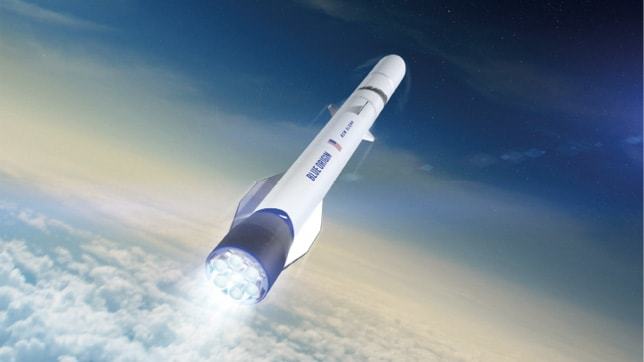 Announced in 2015, Blue Origin will be manufacturing and launching its New Shepard rocket at the Cape Canaveral Spaceport.
Announced in 2015, Blue Origin will be manufacturing and launching its New Shepard rocket at the Cape Canaveral Spaceport.
In continuing to define Florida’s next era in space, Space Florida is planning new launch complexes, logistics, utilities, consumables and support facilities to handle a future environment which will see more than 100 launches a year from the Cape. That next era of launch activity will be accompanied by horizontal and vertical launches and landings of rockets and spacecraft that will be manufactured here. Additionally, spaceflight activities involving both government and civilian astronauts, and a new era of space exploration, research, manufacturing and commercial service activity in low Earth orbit are ushering in a new space economy for Florida and the nation.
The state is poised to dominate the future of the aerospace industry and has the goal to become an essential interstellar trade port and global leader in enabling space commerce
Later this year, as the US again flies American astronauts to space from American soil, from the place where it all began more than 60 years ago, companies like Blue Origin and Virgin Orbit will begin sending tourists and civilian workers to space. As servicing commercial passengers to orbit becomes more frequent, space travel, something that was once an exclusive club, will become more accessible to humankind.
Most notably, this next decade will see NASA and other nations go back to the Moon and to destinations beyond, as well as usher in a revolution of civilian activity in low Earth orbit. With the easier access to space, and the growing importance of space as a location for telecommunications and Earth observation platforms, a commercial service industry will evolve to support the 10,000 to 12,000 new satellites that are forecast to be launched in the next ten years. But we will also see companies and researchers from many nations involved in dedicated on-orbit research and manufacturing platforms, both robotic and man-tended, to create manufactured, service or research value for people here on Earth. This activity will be the foundation of a new Cis-Lunar economy.
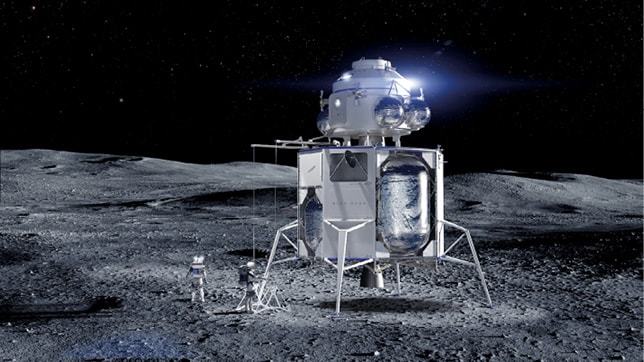 Blue Origin is developing its Blue Moon lunar transport vehicle. Blue Moon can deliver, host and deploy payloads on the lunar surface.
Blue Origin is developing its Blue Moon lunar transport vehicle. Blue Moon can deliver, host and deploy payloads on the lunar surface.
Florida is making the investments in its statewide spaceport system, comprising of six spaceport territories including the Cecil Spaceport, to position the state to serve as the ground node for the next era of space activity and the evolution of the Cis-Lunar economy. Just as London played a key enabling role centuries ago in opening up maritime trade, Florida seeks to be the global leader in opening up space commerce.
The narrative of Florida’s space industry has changed dramatically over the last decade and it has been thrilling to have experienced such a renaissance. I expect the next 10 years to be even busier as we welcome a new generation of aerospace companies, astronauts and enthusiasts.
Florida’s state-wide space and aerospace-related workforce and supporting communities will grow, as a result. For example, at Space Florida’s Exploration Park, outside the gates of Kennedy Space Center, the area is seeing the addition of thousands of new space workers that were not there a few years ago. And state-wide, Florida’s aerospace industry is being recognised by companies as the kind of business and living environment that the next generation aerospace development and manufacturing companies need to thrive in. The future of this industry is very bright in Florida!
About the author
Frank DiBello was selected in 2009 to lead Space Florida, the spaceport authority for the State of Florida. From this position, he develops and executes programmes designed to attract, retain and grow the aerospace industry across the state. Mr DiBello has more than 50 years of direct aerospace, defence and emerging space industry-related experience.
Editor’s note: this editorial feature was sponsored by Space Florida.





